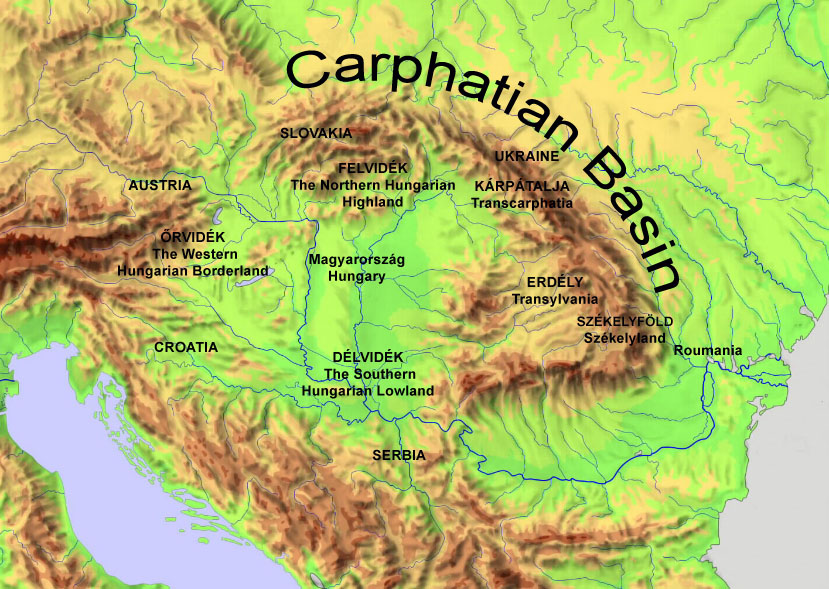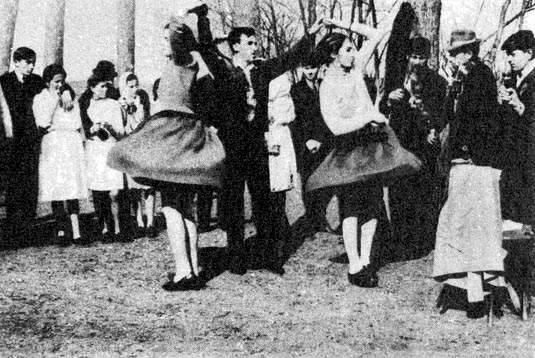The name “csárdás”
comes from the word “csárda,” which is an old fashioned Hungarian word for an
inn. Csárdás is a traditional Hungarian folk-dance that evolved from the features
of East-European pair dances that arrived in the Carpathian Basin during the
European dance waves in the 19th century (mek.niif.hu)
Categorizing the different
types of Csárdás is almost impossible because there are so many ways to group
the types; for example, on the basis of the region of Hungary they danced it
and the different subcategories of the geographical disposition in the given
region, or even on the basis of how many people participate in the dance, and
the ways it is structured. That is why I chose three categories to make you
familiar with the possible differences in the framework of the same dance:
-
Hármas csárdás (hármas means triple): is
the case when one man leads two women. It developed due to the shortage of men
in the village (tudasbazis.suli.net)
-
Körcsárdás (kör means circle): here the
pairs of dancers settle in a circle by grabbing each other’s hands, waist, or
shoulders and perform some steps in this position, but later the circle breaks
up and the pairs continue dancing in twos. (tudasbazis.suli.net)
-
Erdélyi csárdás (Csárdás of Transylvania):
due to the ethnic situation of Transylvania, here Csárdás mixed with the
features of dances from other cultures. For example, the rhythm may change into
asymmetric or the speed may slow down. (tudasbazis.suli.net)
The details what one
might think irrelevant make Csárdás unique. The clothes of the dancers are
often the traditional costumes of the region with the folk embroidery on it. The
men always show their musical knowledge by clapping their hands and flapping
their boots to the rhythm. Meanwhile, women sing folksongs in chorus.
The basic steps of
Csárdás are really easy, two steps to the right and two steps to the left with a
little bending of the knees while the ladies hands are on the shoulders of the men,
and the men’s hands are on the scapula of the ladies. The difficult part comes
with the really fast turns and the more complex steps, but for women it is easier
because they do not have to master the flipping part.
However, I had had the
opportunity both in elementary school and high school to learn Csárdás, but I
have not tried it until my prom, when it was compulsory to dance it. This was a
decision I regretted because it is true that Csárdás is not the type of dance
that perfectly suits me, but while dancing I could feel my roots blooming out
in me. Even if someone is not a Hungarian, experiencing the atmosphere of the
culture is uplifting.





0 comments:
Post a Comment